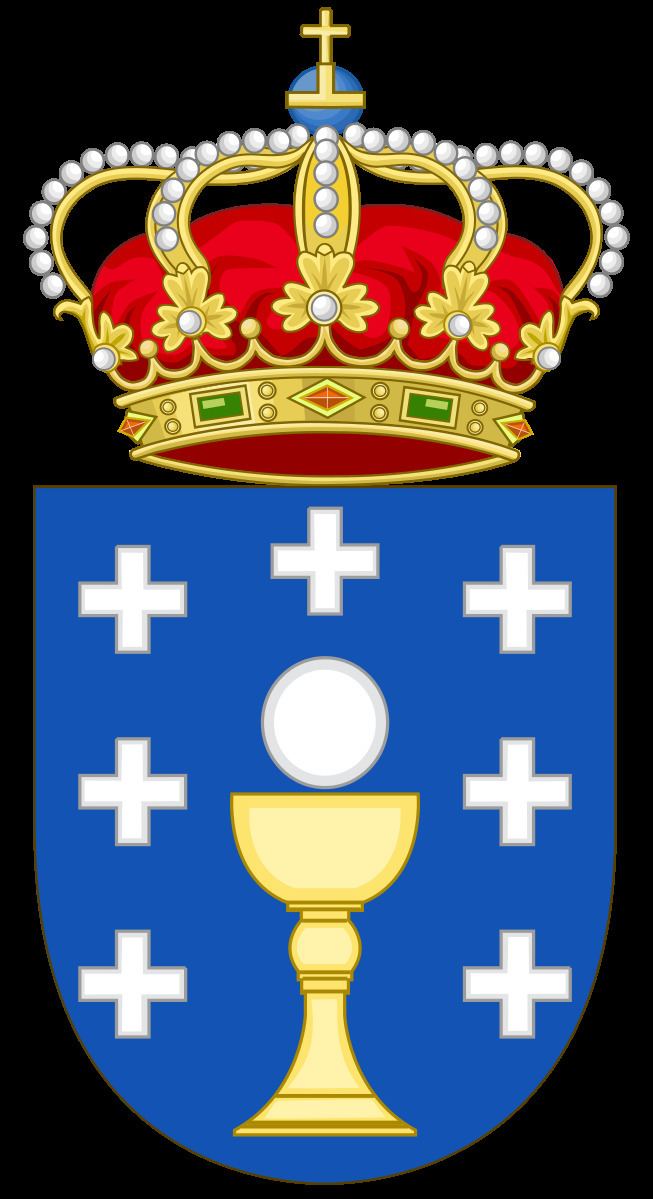Phone +34 981 54 54 00 | ||
 | ||
Address Edificio Administrativo San Caetano, Rúa de San Caetano, s/n, 15704 Santiago de Compostela, La Coruña, Spain Hours Closed today SundayClosedMonday9AM–7PMTuesday9AM–7PMWednesday9AM–7PMThursday(Maundy Thursday)9AM–7PMHours might differFriday(Good Friday)9AM–7PMHours might differSaturday9AM–2PMSuggest an edit Similar | ||
Gardacostas xunta de galicia pesca 2 rescate modern express
The Xunta de Galicia ([ˈʃunta ðe ɡaˈliθja], "Government of Galicia") is the collective decision-making body of the government of the autonomous community of Galicia, composed of the President, the Vice-President(s) and the specialized ministers (Conselleiros).
Contents
- Gardacostas xunta de galicia pesca 2 rescate modern express
- Xunta de galicia riesgo el ctrico
- Legal basis
- History
- Current cabinet
- Location
- References
The Xunta has at its disposal a vast bureaucratic organization based at Santiago de Compostela, the galician government capital. The Xunta de Galicia has delegations in the four capital cities of Galicia: A Coruña, Pontevedra, Ourense and Lugo
Xunta de galicia riesgo el ctrico
Legal basis
Article 16, Section 2 of the Galician Statute of Autonomy states that
History
The Xunta de Galicia finds its origins in the Xunta of the Kingdom of Galicia active between 1528 and 1833. The Xunta was Galicia's representation to the central Spanish monarchy. The Xunta was composed by representatives from the cities (dioceses) of Santiago de Compostela, Lugo, Betanzos, A Coruña, Mondoñedo, Ourense and Tui. But at that time the Xunta did not hold real power; it was a consultative body only.
During the Peninsular War, started in 1808, the Xunta Suprema de Galicia directed the war against the French invaders and maintained the public order in Galician territory. This Xunta Suprema was in charge of military, legislative issues, and international relations. It was the first time that the Xunta had real autonomy, as the Spanish control weakened. This situation lasted until the French invaders were eventually expelled from the Iberian Peninsula and Ferdinand VII of Spain gradually recovered control over former territories (1813–1814).
In 1833 the Xunta was dismantled following the provincial division engaged in Spain by minister Javier de Burgos, under the regency of Maria Christina of the Two Sicilies. In this way, Galicia was separated into four provinces, each one managed by a Provincial Council.
Yet, in 1843 the Xunta Central de Galicia was created and presided over by Xosé Maria Suances. In 1846 commander Miguel Solís initiated a military uprising in Lugo. He put an end to the Provincial Councils and created the Xunta Superior do Goberno de Galicia, presided over by Pio Rodríguez Terrazo. This movement attempted to re-unify Galicia and called for Galicia's self-rule. Solís was eventually defeated at the Battle of Cacheiras (23 April 1846) and the so-called Martyrs of Carral were executed on 27 April.
Prospects for Galician self-government and possible restoration of a Xunta came close while the Galician Statute of Autonomy of 1936 was being discussed, at the time of the Spanish Second Republic (1931–1939). However, the Spanish Civil War (1936–1939) and subsequent Francoist dictatorship (1939–1977) halted the process. There was a temporary Galician government in exile, presided by Castelao, although this was not called Xunta but Consello da Galiza (Council of Galicia).
The process of devolution initiated by the passing of the Spanish Constitution in 1978 allowed for the establishment of a new Xunta, on 16 March 1978. The Galician Statute of Autonomy (1981), came to ratify the Xunta and Galicia's self-government.
Current cabinet
The consellerías are the different departments, or ministries, of the Xunta de Galicia. They are the responsibility of the conselleiros (masculine) or conselleiras (feminine). The conselleiros and conselleiras form the actual cabinet of the government, close to the President. The list of current consellerías and their respective heads is as follows:
Location
San Caetano, s/n
15704 - Santiago de Compostela (A Coruña).
Praza do Obradoiro
15705 - Santiago de Compostela (A Coruña).
Vicente Ferrer, 2
15008 - A Coruña (A Coruña).
Fernández Ladreda, 43
36003 - Pontevedra (Pontevedra).
Habana, 79
32004 - Ourense (Ourense).
Ronda da Muralla, 70
27001 - Lugo (Lugo).
Concepción Arenal, 8
36201 - Vigo (Pontevedra).
Praza de España, 2
15403 - Ferrol (A Coruña).
